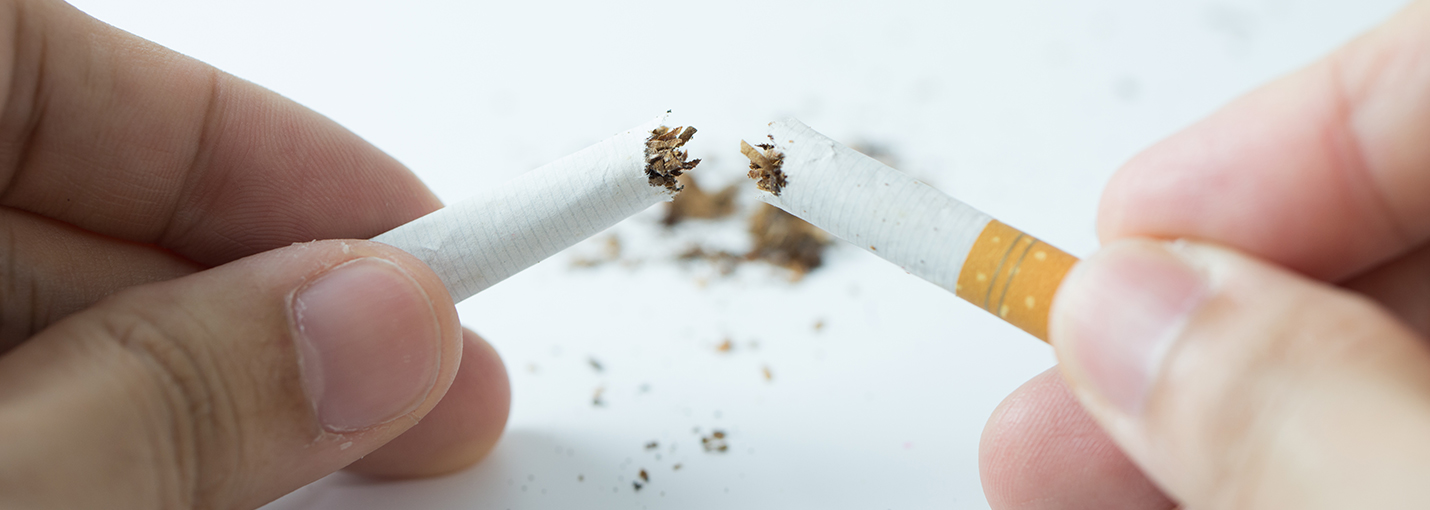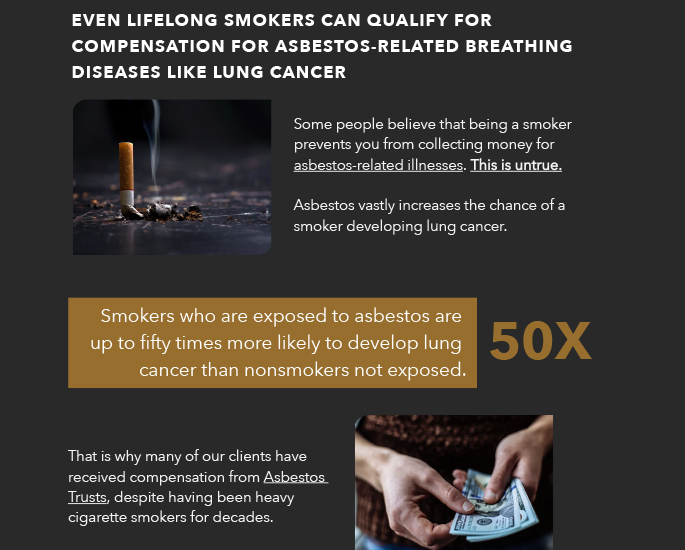There is no escaping the fact that smoking is dangerous to our health. In fact, it is the number one cause of preventable deaths in America. Not only does the cocktail of toxic substances in cigarettes and other tobacco products cause cancer, but they also weaken the user's lungs. With lungs that are already more prone to developing a respiratory disease, adding asbestos exposure to the mix is a recipe for disaster.
It has now long been understood that asbestos exposure can cause deadly cancers and respiratory diseases. Still, in the mid-last century, many commercial big guns were putting profits over public health concerns.
In the 1950s, Kent cigarette manufacturer Lorillard added asbestos to their cigarette filters, claiming that this heat-resistant wonder product would significantly reduce the amount of toxic substances that smokers inhale. Despite medical journals of the time outlining the dangers of asbestos exposure, Lorillard and many other industries relying on asbestos persisted with its use, paying many subsequent sufferers off behind closed doors.
Lorillard is still answering to this decades later, with hundreds of cases having been brought against them, including the 2013 standout $3.5m ruling against them in favor of a former Kent smoker.
Although the rate of smoking in the U.S. has decreased significantly in recent years, sadly, the habit is still quite prevalent. Additionally - and shockingly - asbestos is still in use today, too, and while many more safety measures are now in place, the risks of exposure are still real. These risks are even more considerable for anyone who combines smoking with asbestos exposure. For many, prior exposure to asbestos in previous vocations is cause for concern, especially if they smoke too.


Here are six vital facts for any smoker who has worked with asbestos.
1. Smoking impairs your lung's ability to self-clean
Human lungs are lined with tiny, brush-like structures called 'cilia,' which essentially help to keep your lungs clean and clear by sweeping dust particles out as you breathe. Smoking damages these structures, directly impairing their ability to expel toxic pollutants, including harmful asbestos fibers.
2. Smoking impairs your lung's ability to efficiently absorb oxygen
Our lungs are also lined with alveoli – tiny air sacs that take the oxygen from our breath and move it into our bloodstream. Inhaling tobacco smoke slowly destroys many of these alveoli, making it harder to breathe. This further adds to the difficulty in breathing when combined with any cancer or scar tissue that has already formed around asbestos fibers lodged in the lung lining. h exposure and inhalation.
3. Smoking increases scarring and inflammation in your lungs
Both asbestos fibers and tobacco smoke can create a buildup of scar tissue in your lungs. The compounding issue of combining the two is that smoking also alters how our immune system reacts to asbestos, resulting in even more scar tissue forming. This deadly combination can accelerate the development of asbestosis (a chronic lung condition caused by asbestos exposure).
4. Smokers who are also exposed to asbestos are up to 50 times more likely to develop lung cancer than non-smokers
The risk of asbestos-related lung disease and cancer is significantly compounded by smoking tobacco products. A study assessing the prevalence of lung cancer among those working with asbestos found that the rate of cancer increased in those who also smoked.
People exposed to asbestos are five times more likely to get lung cancer. Smokers are ten times more likely. But smokers exposed to asbestos are up to fifty times more likely to develop lung cancer.1
Smokers who are exposed to asbestos are up to fifty times more likely to develop lung cancer than nonsmokers not exposed. 2 |
5. While asbestos workers who smoke are at an increased risk of lung cancer, quitting smoking eventually reduces the risk back to that of a non-smoker
The good news is that studies show quitting smoking significantly reduces your overall risks. A 2013 study found that within ten years of stopping smoking, the rate of lung cancer mortality returned to the same levels as those who had never smoked.3
6. Even lifelong smokers can recover compensation for health problems associated with asbestos exposure
Many companies in the asbestos industry had scientific proof that asbestos harmed your breathing and led to health diseases, including cancer. But instead of warning consumers with a label, or ensuring employees had proper protective gear, companies hid what they knew, and denied that asbestos posed a danger.
When people started filing lawsuits for their breathing problems and cancer, the evidence against the asbestos companies was so bad, everyone could see they were going to owe a lot of money. So bankruptcy courts ordered the companies to put all their insurance money and assets from the asbestos businesses into trusts and preserve it.
The money in Asbestos Trusts can only be used to compensate people harmed by asbestos exposure. Billions of dollars have been paid to those injured by asbestos, but there is still thirty billion dollars sitting in the trusts.
Extensive medical research shows that asbestos exposure vastly increases the health damage that smoking does and the likelihood of developing lung cancer from smoking. Because of this even lifelong smokers are fully qualified to obtain compensation from asbestos trusts for health problems related to asbestos exposure.
Applying for asbestos trust compensation does not require a lawsuit, but it does require proving a diagnosis of an asbestos illness and exposure to asbestos. If you were exposed to asbestos, speak to an asbestos trusts attorney about your case.


In conclusion
No one is left in the dark any longer regarding the hazardous nature of asbestos exposure and smoking tobacco products. But, sadly, we can't turn back the hands of time as far as asbestos exposure is concerned. Still, we can pay attention to the compelling statistics that demonstrate clearly that smoking can significantly increase the risks of developing lung cancer. Quitting has been found to begin reversing the additional damage caused immediately, and eventually, those who have been exposed to asbestos can reduce their risks back down to non-smoker levels.


1. Klebe, S., Leigh, J., Henderson, D.W. and Nurminen, M., 2020.Asbestos, smoking and lung cancer: an update.International journal of environmental research and public health, 17(1), p.258.
2. Klebe, S., Leigh, J., Henderson, D.W. and Nurminen, M., 2020.Asbestos, smoking and lung cancer: an update.International journal of environmental research and public health, 17(1), p.258.
3. American Thoracic Society (ATS)."Asbestos exposure, asbestosis, and smoking combined greatly increase lung cancer risk."ScienceDaily. ScienceDaily, 12 April 2013.




